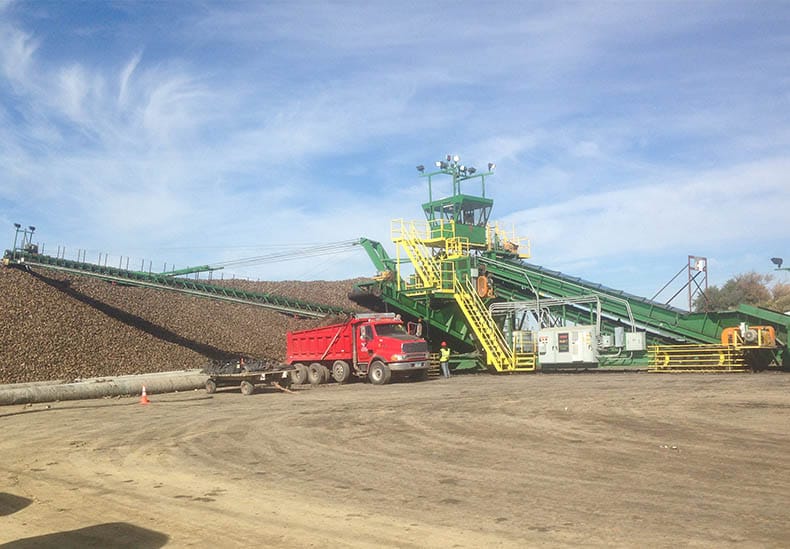American practices in Russia

Amity sugar beet harvesters won the favour and loyalty of American farmers long ago. The Russian farmers using American practices for cultivating sugar beet production also give them well-deserved credit.
The key difference of the American practices is the 56-cm row spacing – instead of the 45 cm conventional in Russia. Such spacing makes it possible to unify the agricultural operations and enhance their efficiency as the same seed drill or tiller may be used not only for sugar beets, but also for maize, soybeans and sunflower. Moreover, it facilitates sugar beet harvesting in muddy conditions.
TRIO, the largest sugar supplier of Lipetsk oblast, also took this technology on board. The company has been operating six- and eight-row Amity harvesters for a year now. This year, they have acquired six 12-row sugar beet combinations. Aleksandr Retinskiy, TRIO Deputy Director for Crop Production, first saw them in the fields of his colleagues from South Dakota (USA) during the visit to the Amity manufacturing plant arranged by AgroCentre. Purchase of harvesting combinations became a pressing issue when the company employed long-term storage of sugar beets. The Amity harvesters made such practices possible as the machines harvest the root crops very gently without damaging them. The defoliator comes first removing the foliage off the sugar beets and preparing the way for the harvesters. Such combined harvesting helps to reduce the damage to the root crops greatly. The defoliators track the ground contours and cut the tops exactly at the set depth.
As a rule, harvesting starts in mid-August. Thanks to its capacity, Amity allows performing the so-called ‘cold harvesting’, which starts late in September – early October. Each machine harvests 70 ha per day. It is 15-20% more than self-propelled machines do. After the crop is harvested, it is stacked into piles up to 10 m high. The ambient temperature at the time should be below 15°С. To prevent sugar beets wilting, the piles are covered with heat- and waterproof material. For long-term storage, the piles are ventilated with forced air and deep-frozen using fans and ambient air. Air ducts are placed on the surface or buried in the ground all over the pile site, the fan forces the ambient air in the ducts pushing the warmed-up air out of the pile. Such active aeration is performed in the autumn period before the onset of frost. Sugar beets are naturally deep-frozen in the regions with enduring winter frosts. For a few days before the frosts, the piles are aerated with forced sharp air. The sugar beets are frozen down to a temperature of -12-15 °С. The piles with frozen sugar beets are thoroughly insulated. Thus, the sugar beets can be stored almost till the end of June without virtually any loss of sugar.
‘Thanks to this technology, the sugar mills and refineries we ship to can operate from February to April, meanwhile the majority of sugar plants have to shut down temporarily for the lack of raw material’, says Sergey Lomantsov, Director of AgroCentreLisk. ‘It ensures a more efficient use of the factory facilities and produces a great economic effect.’
Aleksandr Retinskiy confirms the statement.
‘Due to longer storage of sugar beets, the period of sugar plant work can be sufficiently extended’, says Aleksandr, ‘As a result, we have one plant doing the job of two. Can you imagine how much you save? Building another plant would cost incredible money, so would staff recruitment.’
The Amity equipment not only makes the switchover to the American cultivation practices easier, but it also helps the farms to save their money. The harvester combined with the defoliator and 240- and 360-hp tractors is a little more expensive than a self-propelled 6-row harvester, but its output is, without exaggeration, twice as high. Moreover, the tractors can be used for both sowing works and soil tillage before and after harvesting, which is twice as profitable. The design of the trailed harvester is quite simple, and, unlike the self-propelled harvesters, the machine requires minimum maintenance costs.